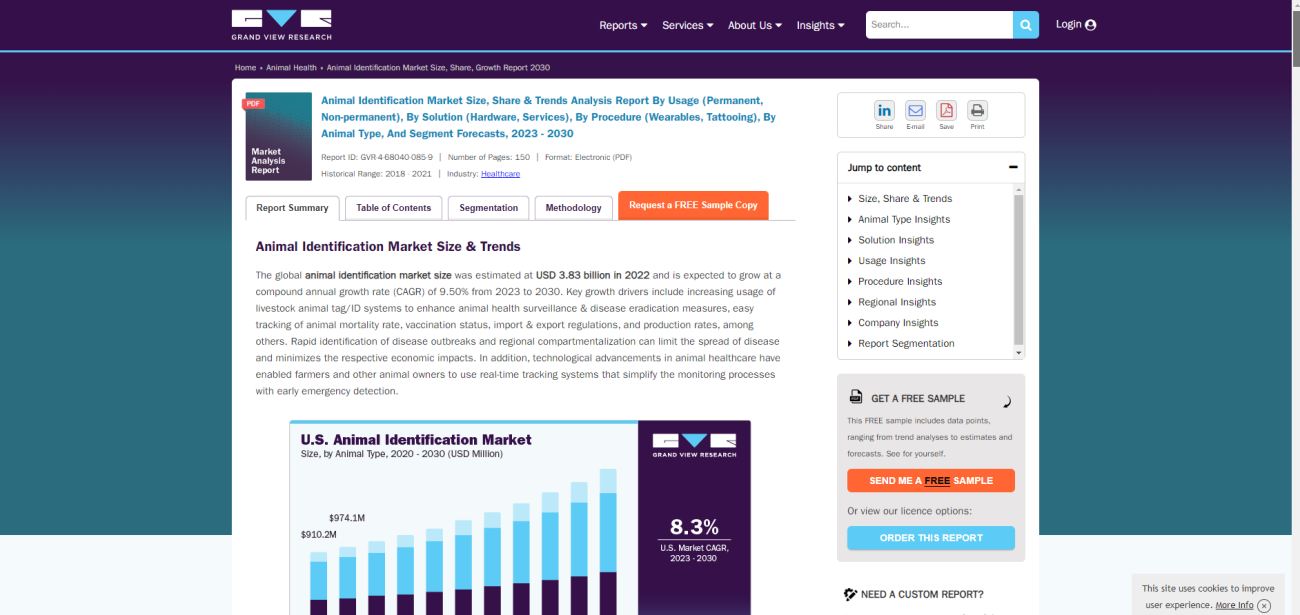
The Animal Identification Market has experienced significant growth in recent years, with its global market size estimated at USD 3.83 billion in 2022. Projections indicate a robust compound annual growth rate (CAGR) of 9.50% from 2023 to 2030. This expansion is attributed to various factors driving market demand, including the escalating adoption of livestock animal tag/ID systems aimed at enhancing health surveillance, bolstering disease control measures, and facilitating efficient production tracking across the industry.
Despite facing challenges such as the disruptions caused by the COVID-19 pandemic, which temporarily impacted sales and supply chains, the market has demonstrated resilience and adaptability. The pandemic-induced lockdowns and logistical constraints affected sales of certain segments, particularly printed animal tags. However, the market witnessed a resurgence driven by increased pet adoption rates and heightened demand for pet care products, which positively influenced market growth in 2021.
Animal identification systems offer a plethora of benefits, ranging from containment of disease outbreaks to ensuring product traceability and effective disaster management. By implementing these systems, stakeholders can swiftly identify and respond to health crises, limit the spread of diseases, and mitigate economic losses associated with livestock and wildlife populations.
Key players such as Merck Animal Health, Avid Identification Systems, Data mars, and GAO RFID play pivotal roles in driving innovation and shaping market dynamics. These companies continuously strive to introduce advanced technologies and solutions that address the evolving needs of the animal identification sector.
Overall, the animal identification market presents lucrative opportunities for industry players, with continued growth anticipated in the foreseeable future. As stakeholders increasingly recognize the importance of animal identification in ensuring food safety, disease control, and sustainable agricultural practices, the demand for innovative identification solutions is expected to surge, further driving market expansion.
